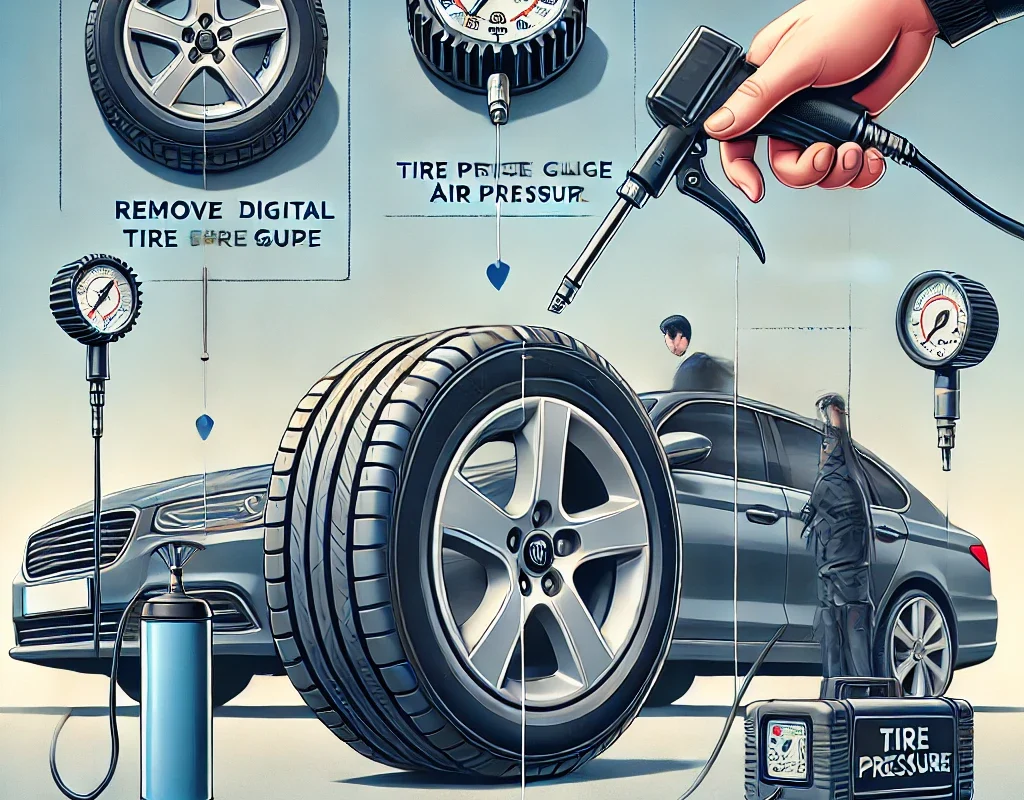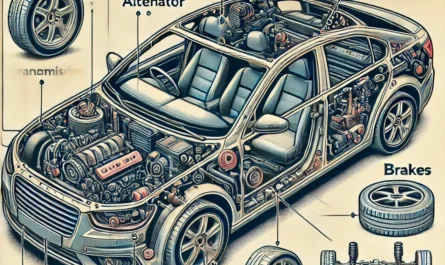Maintaining the correct tire pressure is crucial for ensuring safe driving conditions, optimizing fuel efficiency, and extending the life of your tires. When tire pressure is too low or too high, it can lead to a range of issues, from compromised handling to increased wear on tire treads. Checking and maintaining tire pressure doesn’t require advanced mechanical knowledge, but it does require consistent attention and understanding of how temperature, driving patterns, and tire condition can impact tire pressure.
Understanding Tire Pressure Basics
Tire pressure refers to the amount of air inside a tire, typically measured in pounds per square inch (PSI). Each vehicle has a recommended PSI range, which can often be found in the owner’s manual or on a label inside the driver’s door. This PSI rating helps ensure the tires are firm enough to handle the vehicle’s weight and maintain proper contact with the road.
What is Optimal Tire Pressure and Why Does it Matter?
Optimal tire pressure is the manufacturer-recommended PSI that enables your tires to provide the best performance and safety. When tires are inflated within the optimal range, they wear evenly, offer good traction, and help maintain control. Underinflated tires cause more surface area to come into contact with the road, which can increase friction and heat, potentially leading to tire blowouts. Overinflated tires, on the other hand, reduce the surface area in contact with the road, leading to less grip and greater wear on the center of the tire.
How Incorrect Tire Pressure Affects Vehicle Performance
Incorrect tire pressure affects multiple aspects of vehicle performance, including braking distance, handling, and steering responsiveness. Underinflated tires may result in slower stopping times, while overinflated tires may reduce the effectiveness of the brakes due to less traction. Proper tire pressure is essential for both short and long drives, as imbalances can compromise the vehicle’s stability, especially at high speeds or on wet surfaces.
Safety Risks Associated with Underinflated and Overinflated Tires
Driving on underinflated tires is dangerous because it puts additional stress on the tire’s sidewalls, increasing the risk of a blowout, especially at high speeds. Overinflated tires are more prone to punctures and can be less stable on the road, increasing the risk of skidding or slipping, particularly on wet or icy roads. Keeping tires within the recommended PSI range minimizes these risks, enhancing safety for the driver and passengers.
The Impact of Tire Pressure on Fuel Efficiency
Proper tire pressure improves fuel efficiency, as underinflated tires create more resistance against the road, causing the engine to work harder and burn more fuel. According to the U.S. Department of Energy, for every one PSI drop in tire pressure, gas mileage can decrease by approximately 0.2%. Keeping tires at the correct PSI saves on fuel costs, which is a major consideration for drivers looking to reduce their environmental impact and travel expenses.
Tire Pressure and Tread Wear Patterns
Maintaining correct tire pressure helps ensure even tread wear. Underinflated tires often wear out on the outer edges, while overinflated tires tend to show wear in the center of the tread. Regular tire pressure checks and adjustments prevent uneven wear patterns, extending the life of the tires and saving money in the long run.
How Often Should You Check Your Tire Pressure?
It’s generally recommended to check tire pressure at least once a month. Frequent checks are particularly important during seasonal changes, as temperatures can significantly impact tire pressure. Before a long trip or when carrying heavier loads, it’s wise to check and adjust tire pressure to ensure safe and efficient driving conditions.
Key Tools Needed for Checking Tire Pressure
For accurate tire pressure readings, you’ll need a reliable tire pressure gauge, available in analog, digital, and dial varieties. Many modern vehicles also have built-in Tire Pressure Monitoring Systems (TPMS), which alert you when pressure falls outside the recommended range. A portable air compressor can be a convenient tool to have, allowing you to add air whenever necessary.
How to Find the Recommended Tire Pressure for Your Vehicle
You can find the recommended tire pressure in several places, including the owner’s manual, on the sticker inside the driver’s side door, or sometimes on the inside of the fuel door. These PSI recommendations are specific to the vehicle and its weight, ensuring the tires can carry the load effectively without excessive stress.
Steps to Check Tire Pressure Properly
To check tire pressure, start with cold tires (tires that haven’t been driven on for at least three hours). Remove the valve cap, press the gauge onto the valve stem, and take a reading. Compare the gauge reading with the recommended PSI and adjust as necessary. If the pressure is below the recommended PSI, add air slowly and recheck until the desired pressure is achieved.
When to Adjust Tire Pressure (Seasonal and Environmental Factors)
Tire pressure tends to decrease in cold weather and increase in hot weather due to air expansion and contraction. In winter, check tire pressure more frequently, as pressure can drop with falling temperatures. Conversely, during summer, keep an eye out for overinflation caused by heat. Adjusting tire pressure seasonally helps prevent unexpected flats or tire damage.
You Can Also Read : How to Install Car Parts and Accessories Yourself to Save Money
How to Add or Release Air in Your Tires
To add air, press an air compressor nozzle onto the tire valve stem until the PSI reaches the recommended level. If there’s too much air, use the release valve on the pressure gauge or the valve core to let some air out. Recheck pressure after each adjustment to ensure accuracy.



